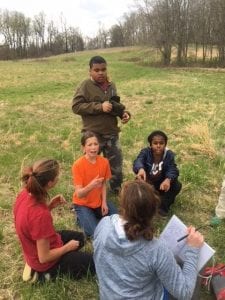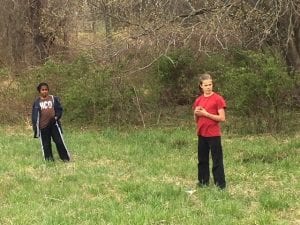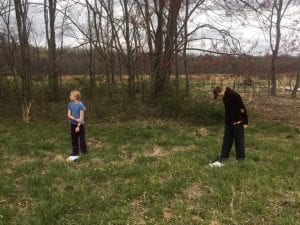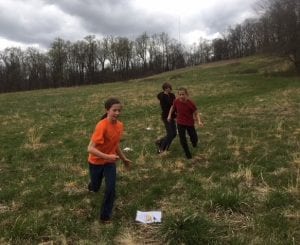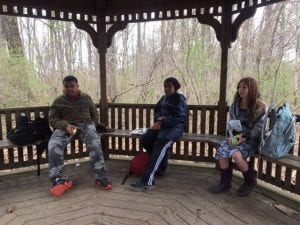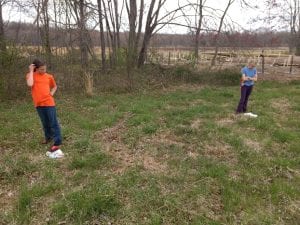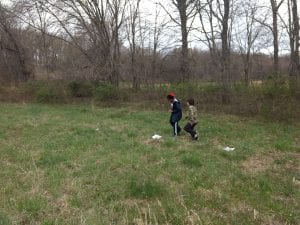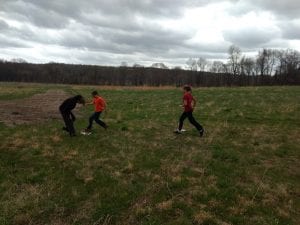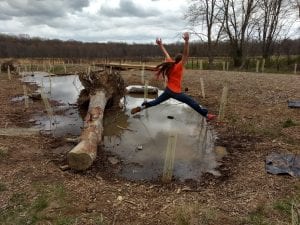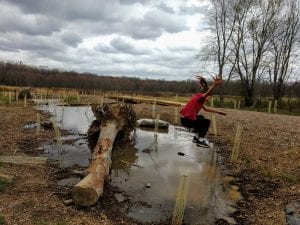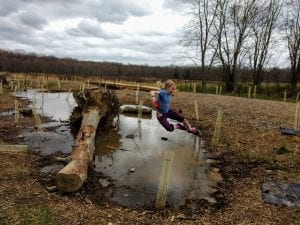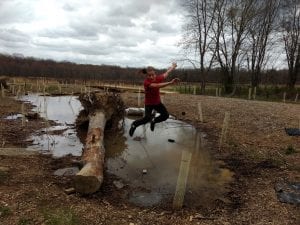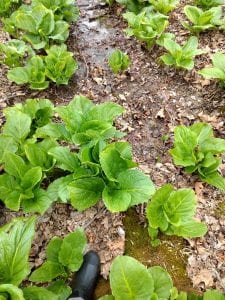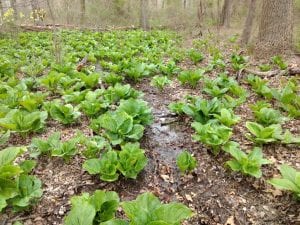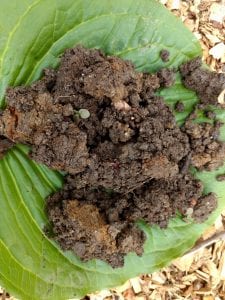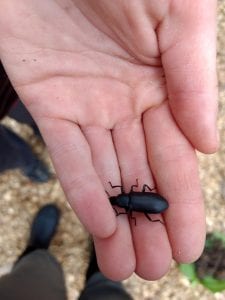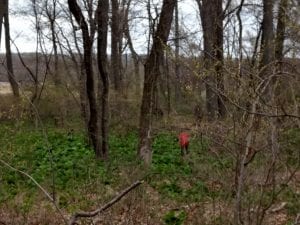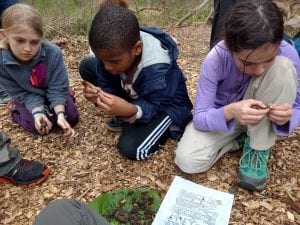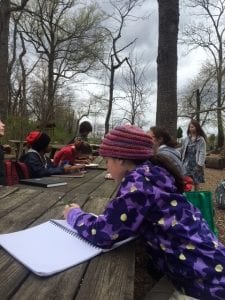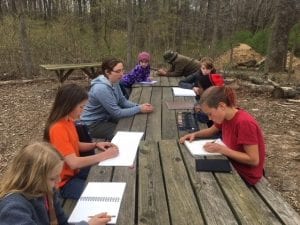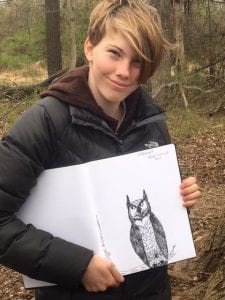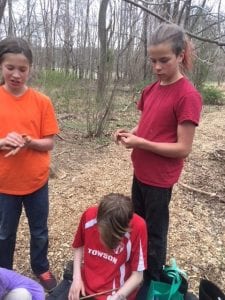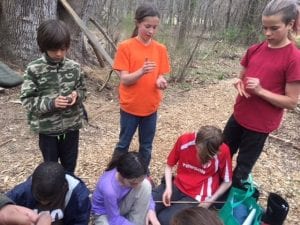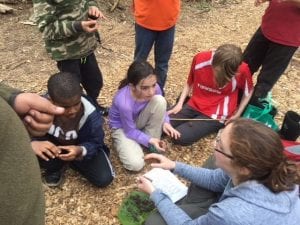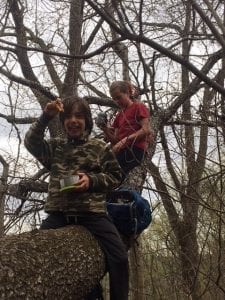4/24/2018
What is a wetland? What do you picture when you hear the word wetland? Do you think of a pond or a swamp? Do you picture a lot of water or cattails? Are there animals and what kinds? Bugs, beavers, fish? Wetlands are amazing ecosystems that are critical to the health of the Earth. Not only are they some of the most biologically diverse places on the planet, they offer irreplaceable functions, that once removed, are hard for people to recreate. Wetlands are facing widespread removal because they often times find themselves in the way of where humans want to build roads, buildings or have farmland. Today we learned more about these ecosystems, how to identify them, why they’re important to us and more about these valuable functions. (In the picture below we are testing the color of a known wetland soil). What are some of those irreplaceable functions? They provide flood protection by acting as large sponges that soak up water, they clean and filter water as it passes through the watershed, and they are important nurseries for small animals and places where animals (especially migrating birds) can rest and find food, water and shelter.
There are three things that make a wetland, a wetland. The first thing is water but a depression in a grassy meadow that holds water for a week isn’t a wetland, that water needs to be present for 14 consecutive days during the growing season. However, just because you have water doesn’t mean it’s a wetland, it needs to have special plants growing in it. These plants are called hyrophilic plants and they are adapted to grow in standing water. We brainstormed some examples of these plants, like cattails, lily pads, and skunk cabbage. Okay, so let’s say we have water present and these special plants, does that mean it’s a wetland? Not quite yet. We need one more thing and that component is soil but not just any soil, it must be hydric soil. Hydric soil is soil that has been changed by the influence of water over a long period of time. It is a different color than soil found in a forest and it might also have things in it like chunks of iron that have oxidized (been exposed to air). It is usually darker in color and often times has grey hues or even is completely grey (this is called gleyed soil). In our journals we wrote down the three things a wetland needs in order to be called a wetland. We also had the opportunity (if we wanted) to share our Great Horned Owl journal pages from a few weeks ago. Later in class today we would check for these three wetland requirements and do some real wetland science!
We hiked down the vista loop trail, stopping at the gazebo for snack and stories of the weekend and then ran down into the meadow. We played at the vernal pool while I set up a game called Wetland Connections. In this game, cards are spread out in an open field in a huge circle. These cards have a picture of a plant or animal on them with a connection written on them, for example, one of the cards has a picture of an Eastern Newt and the card reads “the Eastern Newt searches in the water for an insect to eat, like a Caddisfly Nymph.” The words Caddisfly Nymph are written in green. This is the next card the kids have to find. On the Caddisfly Nymph card there will be a picture of a Caddisfly Nymph and it will read “the Caddisfly Nymph gets eaten by the Rainbow Trout Fry.” The kids must then find the Rainbow Trout Fry and so on. There are about 25 cards and eventually the cards will loop around and you will return to a card you have been to before (hence the name Wetland Connection). This game not only teaches kids about native species like the Eastern Newt and Caddisfly Nymph found in wetlands but it shows how those species interact with each other and how everything is connected. Some connection examples include animals eating other animals, animal sharing a habitat with each other, animals using plants for protection or food, plants providing a nursery for young animals to grow, etc.
We played three rounds of the game. The first round we had 45 seconds to see how many connections (cards) we could get to. The record was 7. For round two we had 1 minute and 30 seconds and the highest that was achieved was 12 cards. On the last round we ran around the circle as a team to see how long it would take us to complete the Wetland Connection. It took us 2 minutes and 2 seconds. We hope to break our record at some point! Before heading to the climbing tree and doing some more wetland investigations we did some log jumped at the vernal pool (being careful to make sure there were no frog eggs or tadpoles in the our landing area, which there weren’t).
After jumping like frogs, we headed to the climbing tree and played and constructed. While fort building Piper found a really cool beetle (seen below) and she also ventured down to the small stream trickling through the forest of skunk cabbage. This is where I collected a soil sample for us to do our wetland soil color and texture. We gathered around and compared our soil to the Munsell color chart (pictured above in the first picture). We determined the soil to belong on the 10YR page and have a Value of 3 and a Chroma of 2, making this a wetland soil based on color! Our next task was going through a texture-by-feel analysis flow chart. Essentially you just answer a bunch of yes or no questions until you reach an end point. We all took a ball of wetland soil and answered the following questions: Does the soil remain in a ball when squeezed? Yes. Next we made a ribbon with the soil and saw how far it would go before breaking. After many trials we determined the soil made it to 2.5-5 cm long. Next was the gritty/smooth test. We asked if the soil felt very gritty as we rubbed it between our fingers or very smooth. We thought it felt somewhere in the middle so the answer was neither grittiness nor smoothness predominates. Therefore our answer was Clay Loam (Loam is an even mixture of all three particle types: clay, sand and silt).
We headed back with smooth, clay loam covered hands that sparkled in the sun with all the tiny bits of mica. Dirty hands are the best way to end the day!




